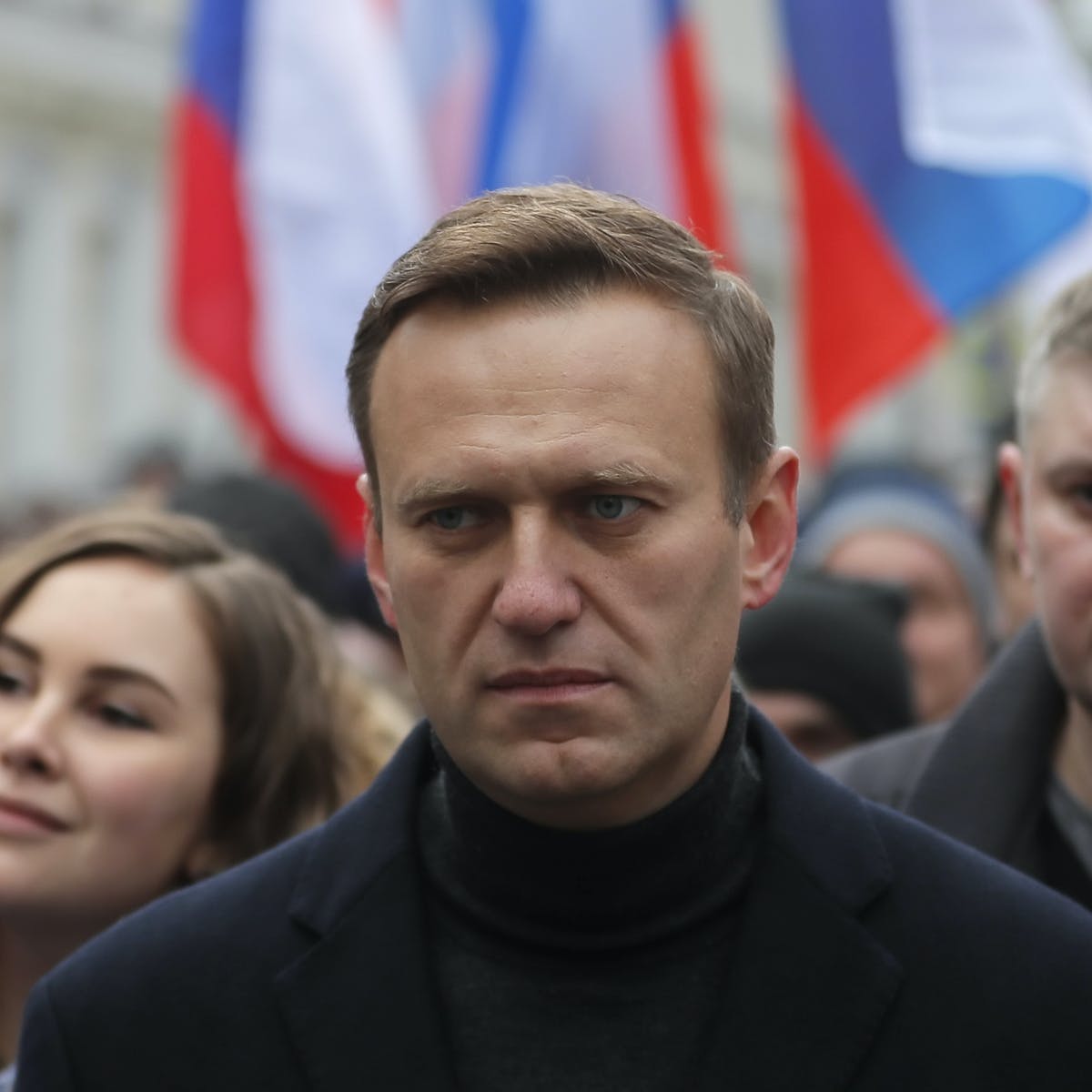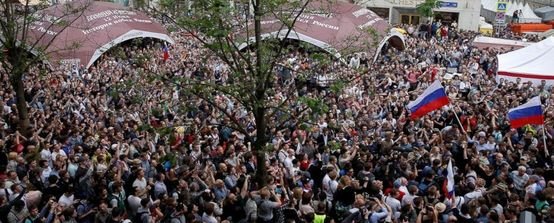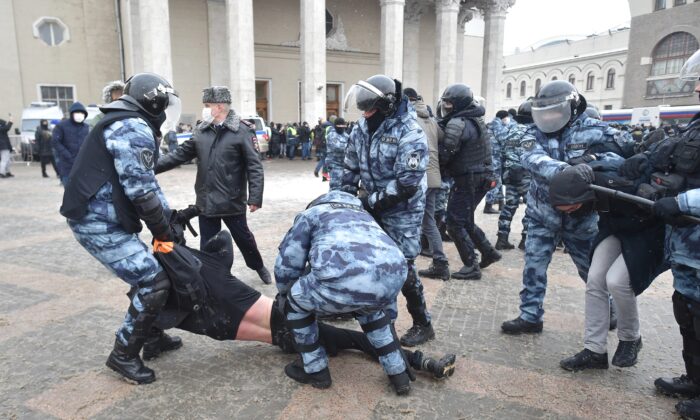“Navalny is just a puppet of the US, who is paid by the Soros foundation, Clinton foundation, who paid for his studies. It’s not good to protect such people. The whole situation is just a political case, this is propaganda against Russian people”.
Now all major news are talking about the breaching of human rights in Russia. The fake news again is on the making-up perception of a dictator in Russia who should be removed. Remember Sadam Hussein, remember Gaddafi. Remember the situation of their country after removing their leaders where constant war, terrorism, and poverty replaced them. They are in the building-up the “visuals” for the United Nations’ intervention. The Biden administration on behalf of America says:
“The U.S. condemns the persistent use of harsh tactics against peaceful protesters and journalists by Russian authorities for a second week straight” U.S. Secretary of State Antony Blinken.
They are preparing the stage. Do not create that stage for them. Do not give them satisfaction.
Look at this picture of how emotionally fake it is. A very calculated gaze into the camera. A tailored sad face for the wife, but Navalny is not good at acting at all. He is funny even in trying to do so.
Alexei Navalny; Soros’s Methadone Man


https://www.youtube.com/watch?v=VoXDfeSVkWM&t=3266s
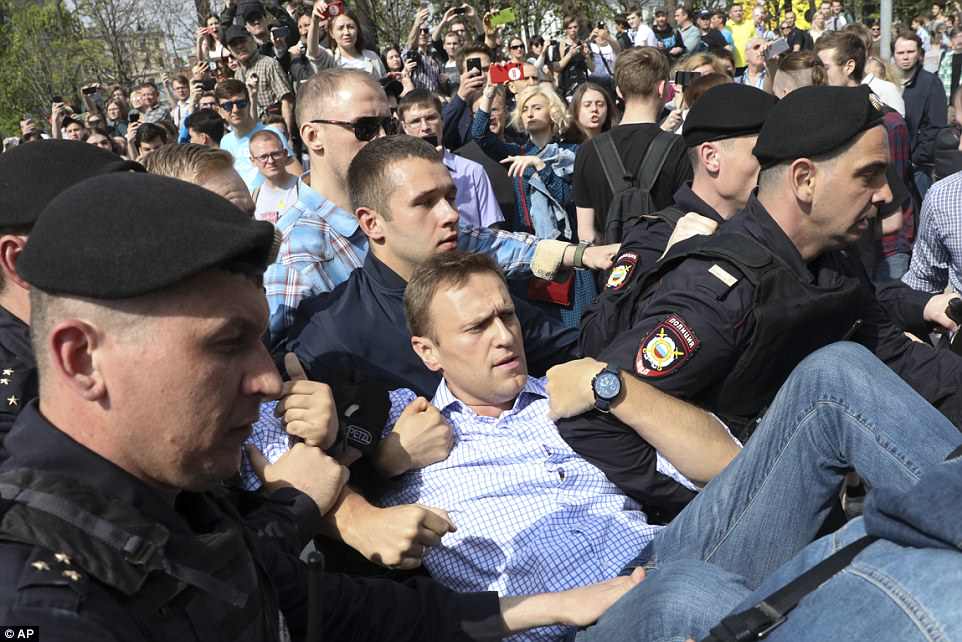
His campaign of “fight against corruption” is the most corrupt campaign but as we know Soros and how he operates he always chooses canards as the exact opposite of what they do. He hides behind pointing his fingers to somebody else for what is his own job in the first place. Fighting corruption? With Corrupt money of the Corrupt Soros?
As always the same old strategies. legalizing drugs to turn drug addicts into voters. legalizing prostitution to turn prostitutes into voters. People are just vote tickets and that little value is important only BEFORE the election and soon after, people will count nothing.
Alexey Navalny, appeared in 2018 from nowhere (just like Obama, Tony Blair, and Emanuel Macron), campaigning to legalizing marijuana, who is he targetting? Just drug addicts? A big no. He is targetting school kids and students. The younger generation. The real consumers of marijuana.
But what peopel don’t know before he comes to the surface, is that Navalny is a long time supervisor of Soros’s Open Society Foundation programs for the legalization of methadone which is prohibited in Russia so it is naive to think he will stop at marijuana. Putting Russia on the methadone needle is the trajectory.It is stunning how the Russians may think a puppet fed with outsider dollars can heal the nation. Navalny is like a funnel with a hole at its bottom. He will never be enough fed. He is just a tunnel for the main vehicle to pass.
Leaks of the Open Society Institute by DC-Leaks in 2015 had one interesting leak for the Russian people: “The Russian project” engineered by Soros.
The purpose of the project was started as the destabilization of Russia leading to a change of power. and whose name appears on the document? Alexei Navalny.
In two of the papers: “Open Society PHP work in Russia” and “Capacity building and strengthening the third sector”, Navanlyas is the one who is handling the projects. As we read: “The Russian Economy Will Benefit from the Eurasian Union and Greater Eurasia” Soros is actively following the Eurasia plan of Brzezinski (the subject of my coming book: Minds Behind Wars). It is not of his own but he is drooling to fulfill it.

Soros’s healthcare project for Russia is summarized in the “harm reduction” program, provides the damaging methadone therapy to cure addiction. The irony is in this “humanistic” IHRD aka harm reduction, the “harm” addiction is cured by the essential medicines (AEMI) that according to Soros is methadone.
A population of young methadone addicts will best serve Soros’ plan. Through the document, we continue to read and again Navanly’s name pops out.
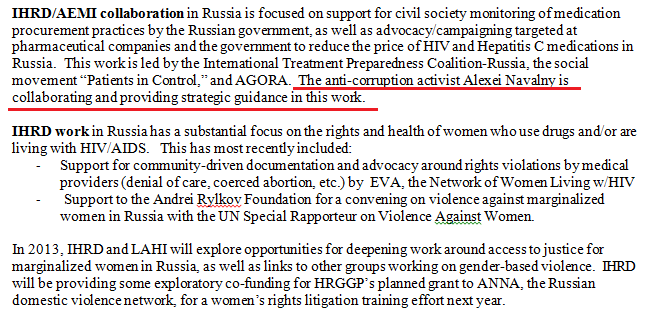

 It always start with small things: campaigning to legalize marijuana, and then it extends to methadone. The same problem-solution game for a problem that didn’t exist at the first place but as the solution is their initial plan, the dependence needs to be created, funded, and then strengthened, convincing Russians that methadone is the exact solution to the problem.Navalny is a good drug dealer for Soros so he (Soros) not only earns from the sell but conquers a country of methadone addicts. He is already educating Russian kids on how to be the future drug addicts and die in agony.But this is not all. Navalny is organizing anti-Putin protests all across the country. For us, this is just the repetition of the same blueprint. We have seen it all. Pu**y hat protests? Antifa disruptors? Occupy Wallstreet? Black Lives Matter? and many many more. (The full list of Soros donations, organizations, backed protests, and activist are fully explained in two full chapters of RING OF THE CABAL.)As I said at the beginning of the article, after Ukraine, the only place we were convinced that will be out of reach of the financial terrorist Soros was Russia, but now we see, nowhere is safe from his subversive machine of destruction.On December 6th, 2017 in one of the organized anti-Putin protests participated by tens of thousands of paid protestors funded by Soros, Navalny was arrested for the illegal protest without proper authorization aimed to unseat Vladimir Putin.
It always start with small things: campaigning to legalize marijuana, and then it extends to methadone. The same problem-solution game for a problem that didn’t exist at the first place but as the solution is their initial plan, the dependence needs to be created, funded, and then strengthened, convincing Russians that methadone is the exact solution to the problem.Navalny is a good drug dealer for Soros so he (Soros) not only earns from the sell but conquers a country of methadone addicts. He is already educating Russian kids on how to be the future drug addicts and die in agony.But this is not all. Navalny is organizing anti-Putin protests all across the country. For us, this is just the repetition of the same blueprint. We have seen it all. Pu**y hat protests? Antifa disruptors? Occupy Wallstreet? Black Lives Matter? and many many more. (The full list of Soros donations, organizations, backed protests, and activist are fully explained in two full chapters of RING OF THE CABAL.)As I said at the beginning of the article, after Ukraine, the only place we were convinced that will be out of reach of the financial terrorist Soros was Russia, but now we see, nowhere is safe from his subversive machine of destruction.On December 6th, 2017 in one of the organized anti-Putin protests participated by tens of thousands of paid protestors funded by Soros, Navalny was arrested for the illegal protest without proper authorization aimed to unseat Vladimir Putin. 

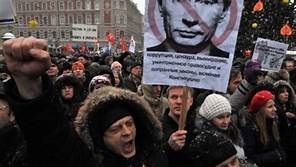
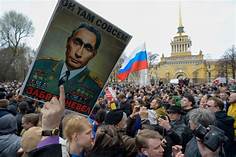 After being banned Navalny takes the case to where? To the anti-Putin European globalist Court over Money Laundering Charges. According to a report on Reuters published on March 6, 2020:“Russian opposition politician Alexei Navalny lodged a complaint against Russia at the European Court of Human Rights on Friday to contest a money-laundering investigation he says authorities have opened to thwart his political activities.Russian investigators opened the case against Navalny’s Anti-Corruption Foundation last August after he called on people to attend rallies that grew into Moscow’s biggest sustained protest movement in years before fizzling out.On Tuesday, Navalny, Russia’s most prominent opposition politician, said his bank accounts and those of his close family had been emptied and frozen, which he linked to the investigation.“I have repeatedly faced persecution by the Russian authorities for my political activities,” Navalny said in comments to the European Human Rights Advocacy Centre that is representing him and his allies in the case.”The complaint was submitted by Navalny and several of his allies on Friday, Navalny’s spokeswoman, Kira Yarmysh, said.“The endless searches, seizures of equipment, and freezing of bank accounts greatly interfere with our activities,” Navalny said.In September, law enforcement authorities carried out mass raids on the homes and offices of Navalny’s supporters over the case. In December, authorities raided his Moscow headquarters, dragging Navalny out by force and confiscating equipment.Russia’s Justice Ministry in October formally labeled Navalny’s anti-corruption group a “foreign agent”, meaning it can be subjected to spot checks and face bureaucratic scrutiny. Navalny was barred from running for president in 2018 because of a past conviction on charges he has called trumped up. Putin won that election in a landslide.”
After being banned Navalny takes the case to where? To the anti-Putin European globalist Court over Money Laundering Charges. According to a report on Reuters published on March 6, 2020:“Russian opposition politician Alexei Navalny lodged a complaint against Russia at the European Court of Human Rights on Friday to contest a money-laundering investigation he says authorities have opened to thwart his political activities.Russian investigators opened the case against Navalny’s Anti-Corruption Foundation last August after he called on people to attend rallies that grew into Moscow’s biggest sustained protest movement in years before fizzling out.On Tuesday, Navalny, Russia’s most prominent opposition politician, said his bank accounts and those of his close family had been emptied and frozen, which he linked to the investigation.“I have repeatedly faced persecution by the Russian authorities for my political activities,” Navalny said in comments to the European Human Rights Advocacy Centre that is representing him and his allies in the case.”The complaint was submitted by Navalny and several of his allies on Friday, Navalny’s spokeswoman, Kira Yarmysh, said.“The endless searches, seizures of equipment, and freezing of bank accounts greatly interfere with our activities,” Navalny said.In September, law enforcement authorities carried out mass raids on the homes and offices of Navalny’s supporters over the case. In December, authorities raided his Moscow headquarters, dragging Navalny out by force and confiscating equipment.Russia’s Justice Ministry in October formally labeled Navalny’s anti-corruption group a “foreign agent”, meaning it can be subjected to spot checks and face bureaucratic scrutiny. Navalny was barred from running for president in 2018 because of a past conviction on charges he has called trumped up. Putin won that election in a landslide.”
Well, that was the hard-liner leftists Reuter’s report which glorifies Soros backed Navanly with love stories that we are very well familiar with. All mainstream media are anti-Putin and pro-Nvanly and his corrupt “anti-corruption” campaign using NLP tactics to repeat the word “anti-corruption” until he looks an anti-corruption figure due to repetitive manipulistic mind control tricks.
MOSCOW—Chanting slogans against President Vladimir Putin, tens of thousands took to the streets on Jan. 31 across Russia to demand the release of jailed opposition leader Alexei Navalny, keeping up nationwide protests that have rattled the Kremlin.
More than 4,700 people were detained by police, according to a monitoring group, and some were beaten.
Russian authorities mounted a massive effort to stem the tide of demonstrations after tens of thousands rallied across the country last weekend in the largest, most widespread show of discontent that Russia had seen in years. Despite threats of jail terms, warnings to social media groups, and tight police cordons, the protests again engulfed cities across Russia’s 11 time zones.
Navalny’s team quickly called another protest in Moscow on Feb. 2, when he is scheduled for a court hearing that could send him to prison for years.
The 44-year-old Navalny, an anti-corruption investigator who is Putin’s best-known critic, was arrested on Jan.17 upon returning from Germany, where he spent five months recovering from nerve-agent poisoning that he blames on the Kremlin. Russian authorities have rejected the accusations. He was arrested for allegedly violating his parole conditions by not reporting for meetings with law enforcement while recuperating in Germany.
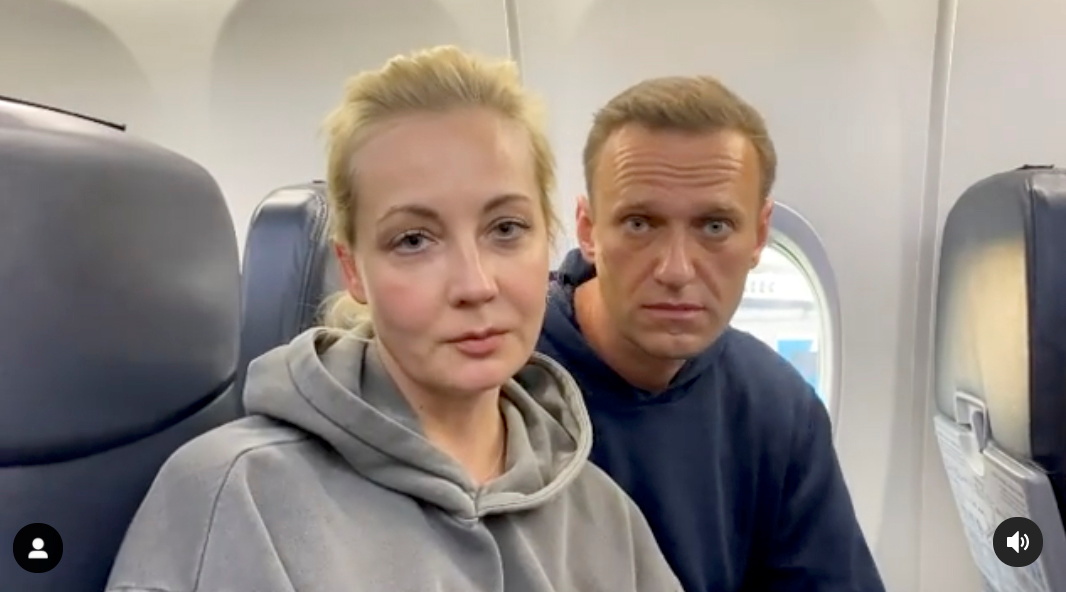
The United States urged Russia to release Navalny and criticized the crackdown on protests.
“The U.S. condemns the persistent use of harsh tactics against peaceful protesters and journalists by Russian authorities for a second week straight,” U.S. Secretary of State Antony Blinken said on Twitter.
The Russian Foreign Ministry rejected Blinken’s call as a “crude interference in Russia’s internal affairs” and accused Washington of trying to destabilize the situation in the country by backing the protests.
On Jan. 31, police detained more than 4,700 people at protests in cities nationwide, according to OVD-Info, a group that monitors political arrests, surpassing some 4,000 detentions at the demonstrations across Russia on Jan. 23.
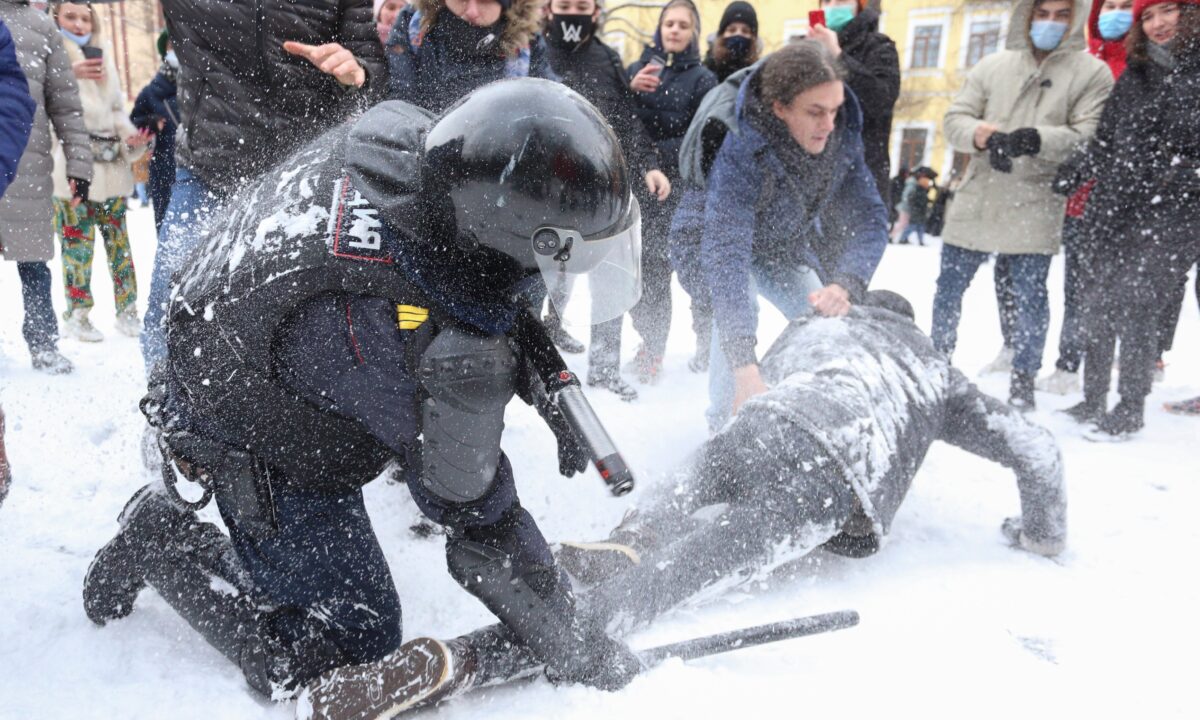
In Moscow, authorities introduced unprecedented security measures in the city center, closing subway stations near the Kremlin, cutting bus traffic, and ordering restaurants and stores to stay closed.
Navalny’s team initially called for the Jan. 31 protest to be held on Moscow’s Lubyanka Square, home to the main headquarters of the Federal Security Service, which Navalny claims was responsible for his poisoning. Facing police cordons around the square, the protest then shifted to other central squares and streets.
Police were randomly picking up people and putting them into police buses, but thousands of protesters marched across the city center for hours, chanting “Putin, resign!” and “Putin, thief!”—a reference to an opulent Black Sea estate reportedly built for the Russian leader that was featured in a widely popular video released by Navalny’s team.
“I’m not afraid, because we are the majority,” said Leonid Martynov, who took part in the protest. “We mustn’t be scared by clubs because the truth is on our side.”
At one point, crowds of demonstrators walked toward the Matrosskaya Tishina prison, where Navalny is being held. They were met by phalanxes of riot police who pushed the march back and chased protesters through courtyards, detaining scores and beating some with clubs. Still, demonstrators continued to march around the Russian capital, zigzagging around police cordons.
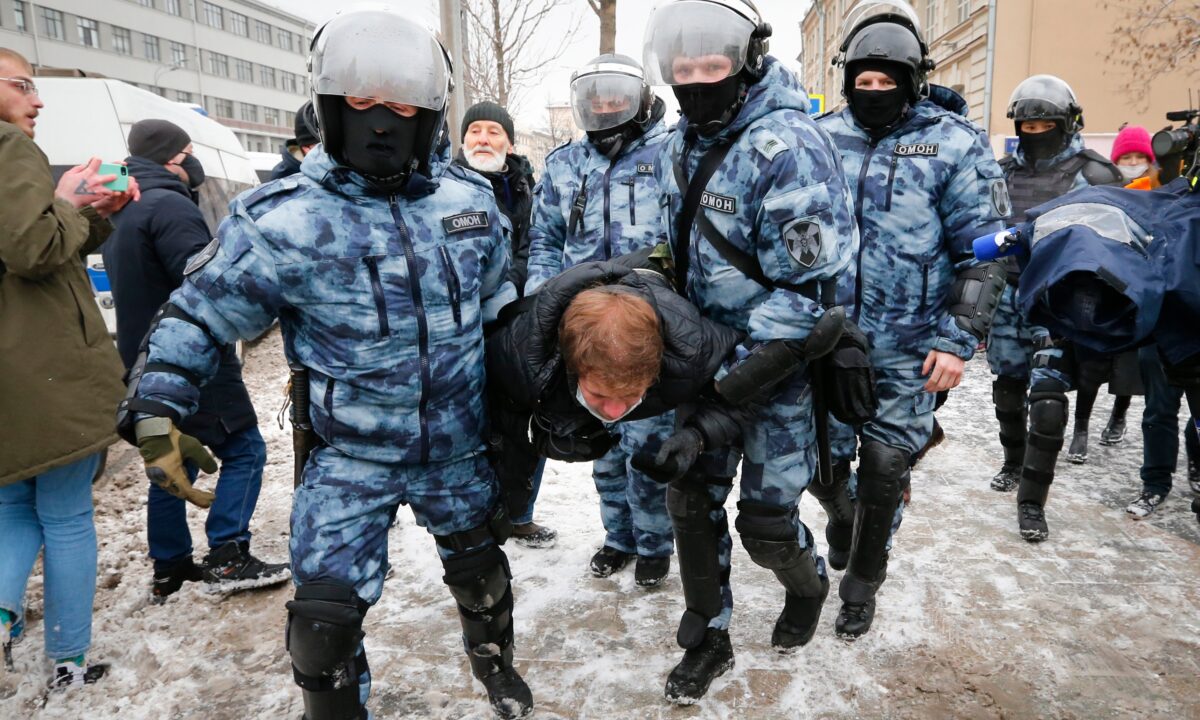
In Moscow, nearly 1,500 people were detained, including Navalny’s wife, Yulia.
“If we keep silent, they will come after any of us tomorrow,” she said on Instagram, before turning out to protest.
Amnesty International said that authorities in Moscow have arrested so many people that the city’s detention facilities have run out of space.
“The Kremlin is waging a war on the human rights of people in Russia, stifling protesters’ calls for freedom and change,” Natalia Zviagina, the group’s Moscow office head, said in a statement.
Several thousand people marched across Russia’s second-largest city of St. Petersburg, chanting “Down with the czar!” and occasional scuffles erupted as some demonstrators pushed back police who tried to make detentions. More than 1,000 were arrested.
Some of the biggest rallies were held in Novosibirsk and Krasnoyarsk in eastern Siberia, and Yekaterinburg in the Urals.
“I do not want my grandchildren to live in such a country,” said 55-year-old Vyacheslav Vorobyov, who turned out for a rally in Yekaterinburg. “I want them to live in a free country.”

Swedish Foreign Minister Ann Linde, who currently chairs the Organization for Security and Cooperation in Europe, condemned “the excessive use of force by authorities and mass detention of peaceful protesters and journalists” and urged Russia “to release all those unjustly detained, including Navalny.”
As part of a multipronged effort by authorities to block the protests, courts have jailed Navalny’s associates and activists across the country over the past week. His brother Oleg, top aide Lyubov Sobol and three other people on Jan. 29 were put under a two-month house arrest on charges of allegedly violating coronavirus restrictions during last weekend’s protests.
Prosecutors also demanded that social media platforms block calls to join the protests.
The Interior Ministry issued stern warnings to the public, saying protesters could be charged with taking part in mass riots, which carries a prison sentence of up to eight years.
Protests were fueled by a two-hour YouTube video released by Navalny’s team after his arrest about the Black Sea residence purportedly built for Putin. The video has been viewed over 100 million times, inspiring a stream of sarcastic jokes on the internet amid an economic downturn.
Russia has seen extensive corruption during Putin’s time in office while poverty has remained widespread.
Demonstrators in Moscow chanted “Aqua discotheque!”—a reference to one of the fancy amenities at the residence that also features a casino and a hookah lounge equipped for watching pole dances.
Putin says neither he nor any of his close relatives own the property. On Jan. 30, construction magnate Arkady Rotenberg, a longtime Putin confidant and his occasional judo sparring partner, claimed that he himself owned the property.
Navalny fell into a coma on Aug. 20 while on a flight from Siberia to Moscow and the pilot diverted the plane so he could be treated in the city of Omsk. He was transferred to a Berlin hospital two days later. Labs in Germany, France and Sweden, as well as tests by the Organization for the Prohibition of Chemical Weapons, established that he was exposed to the Novichok nerve agent.
Russian authorities have refused to open a full-fledged criminal inquiry, claiming lack of evidence that he was poisoned.
Navalny was arrested immediately upon his return to Russia earlier this month and jailed for 30 days on the request of Russia’s prison service, which alleged he had violated the probation of his suspended sentence from a 2014 money-laundering conviction that he’s rejected as political revenge.
On Jan. 28, a Moscow court rejected Navalny’s appeal to be released, and the Feb. 2 hearing could turn his 3 1/2-year suspended sentence into one he must serve in prison. Navalny’s team called for another protest outside the court building.
By Jim Heintz and Vladimir Isachenkov
